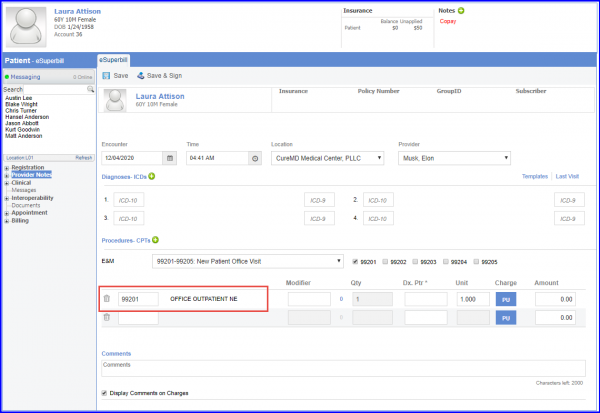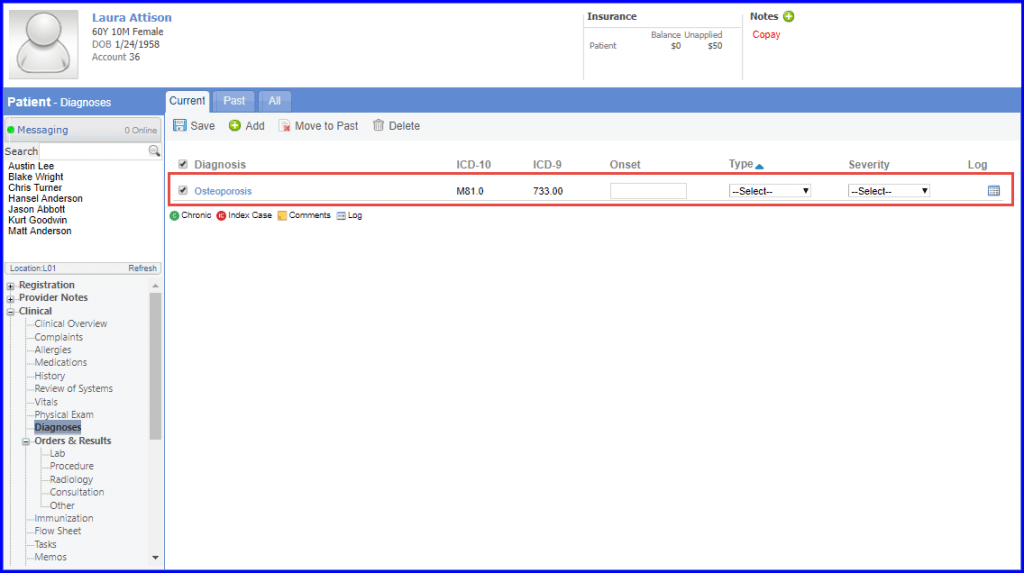CMS249v2 – Appropriate Use of DXA Scans in Women Under 65 Years Who Do Not Meet the Risk Factor Profile for Osteoporotic Fracture
| Appropriate Use of DXA Scans in Women Under 65 Years Who Do Not Meet the Risk Factor Profile for Osteoporotic Fracture | CMS249v2 | Percentage of female patients 50 to 64 years of age without select risk factors for osteoporotic fracture who received an order for a dual-energy x-ray absorptiometry (DXA) scan during the measurement period. |
|---|---|---|
| – DENOMINATOR
Female patients ages 50 to 64 years with an encounter during the measurement period – NUMERATOR Female patients who received an order for at least one DXA scan in the measurement period -DENOMINATOR EXCLUSIONS Exclude patients with a combination of risk factors (as determined by age) or one of the independent risk factors
COMBINATION RISK FACTORS[The following risk factors are all combination risk factors; they are grouped by when they occur in relation to the measurement period]: The following risk factors may occur any time in the patient’s history but must be active during the measurement period:
The following risk factor may occur any time in the patient’s history and must not start during the measurement period:
The following risk factors may occur at any time in the patient’s history or during the measurement period:
The following risk factors may occur any time in the patient’s history and do not need to be active at the start of the measurement period:
INDEPENDENT RISK FACTORS (The following risk factors are all independent risk factors; they are grouped by when they occur in relation to the measurement period): The following risk factors may occur at any time in the patient’s history and must not start during the measurement period:
The following risk factors may occur at any time in the patient’s history prior to the start of the measurement period, but do not need to be active during the measurement period:
The following risk factors may occur at any time in the patient’s history or during the measurement period:
|
||
| – APPLICATION WORKFLOW
For Denominator: The documentation of the first encounter takes place when one visit code is documented on the patient’s eSuperbill/ charge. To record any of the following encounter, navigate to Patient > Provider Note > eSuperbill.
For Numerator: All female patients who received an order for at least one DXA scan in the measurement period are included in numerator.
For Denominator Exclusions: All patients with a combination of risk factors (as determined by age) or one of the independent risk factors Patient has age Dependent Risk Factors
COMBINATION RISK FACTORS The following risk factors may occur any time in the patient’s history but must be active during the measurement period.
The following risk factor may occur any time in the patient’s history and must not start during the measurement period:
The following risk factors may occur at any time in the patient’s history or during the measurement period, to document any of the following Combination Risk Factors, navigate to workflow mentioned ahead
INDEPENDENT RISK FACTORS The following risk factors may occur at any time in the patient’s history and must not start during the measurement period:
|
||


